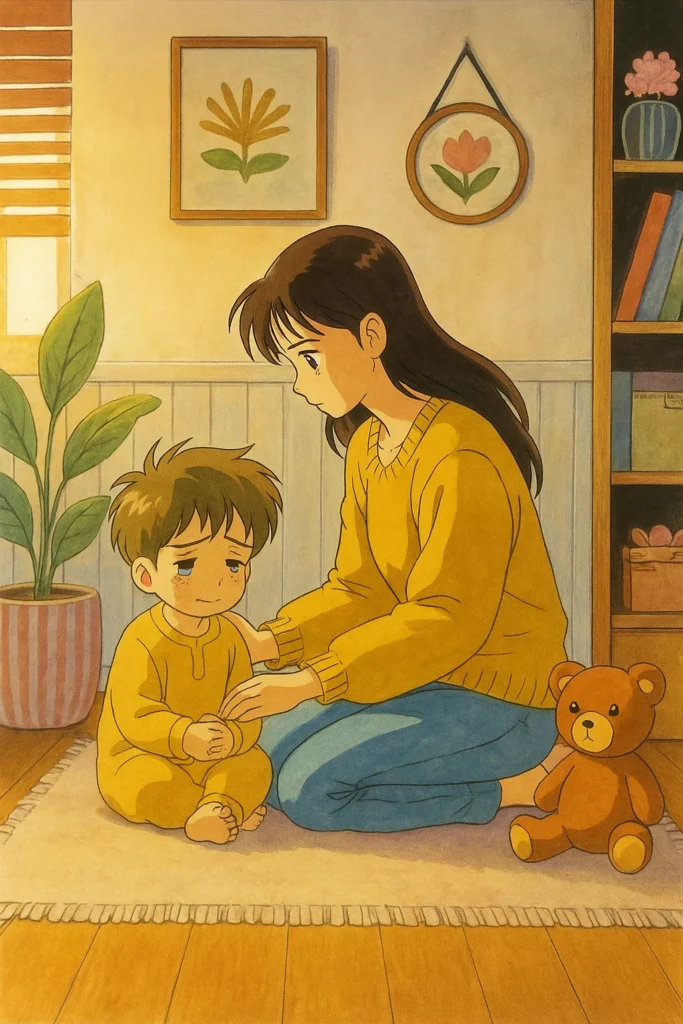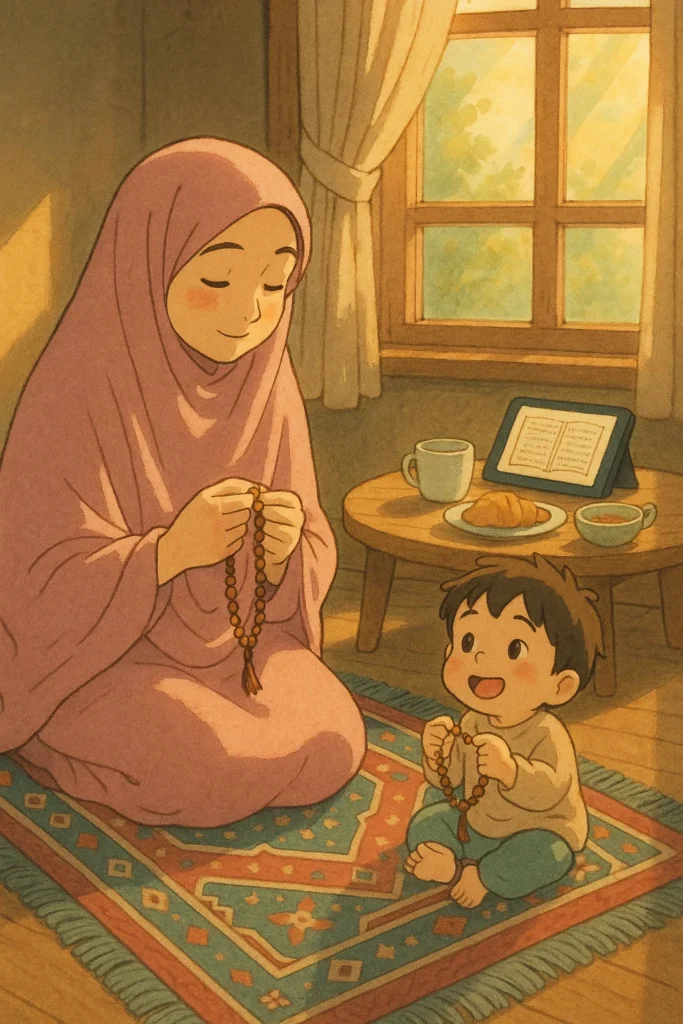Struggling to spot anxiety in 2-4 year olds signs? This friendly parent guide breaks down the real indicators you need to watch for, plus practical tips to help your little one feel better.
I’m sure you’ve read in my previous article that breastfeeding for 2 years ALONE doesn’t totally prevent anxiety, but can we start noticing anxiety in 2-4 year olds signs ? we’ll explore that out

Introduction
Here’s something that might surprise you: nearly 1 in 10 kids deal with anxiety, and it can show up as early as age 2! I get it, as a parent, you’re constantly wondering if that epic meltdown in the cereal aisle is just “normal toddler stuff” or something more.
Let me be real with you for a second. Figuring out anxiety in 2-4 year olds signs can feel like trying to solve a puzzle with half the pieces missing! Your little one can’t exactly say, “Hey mom, I’m feeling anxious about preschool.”
Instead, they show us through behaviors that sometimes look a whole lot like everyday toddler drama.
Is This Normal Toddler Drama or Something More?
What’s totally normal at this age (spoiler: a lot of big feelings!)
Separation anxiety : crying or clinging when a parent leaves.
Stranger anxiety : shyness or fear around unfamiliar people.
Fear of the dark , monsters, or loud noises: imagination is developing, fears are common.
Changes in routine: toddlers may become anxious with new environments (nursery, moving house).
Regression under stress: thumb-sucking, bedwetting, or wanting a bottle again.
Clinginess in new situations: staying close to a parent before feeling safe to explore.
Signs of clinically concerning anxiety
Persistent, intense fear that doesn’t match the situation (e.g., terrified of leaving home every day).
Disproportionate distress lasting weeks to months, interfering with daily life.
Avoidance behaviors (refuses nursery, won’t interact with peers, extreme tantrums when separated).
Physical symptoms with distress: recurrent stomachaches, headaches, sleep refusal.
Interference with development: not exploring, not playing independently, regression that persists.
Hypervigilance or constant worry beyond what’s expected for age.
🧠 Why personality matters in toddler anxiety (2–4 years)
Temperament is innate: Some children are naturally more cautious, sensitive, or shy. Others are bold and adventurous. This baseline temperament shapes how they react to new or stressful situations.
Sensitive/reactive toddlers
More likely to cling, cry, or show physical symptoms (tummy aches, refusal to sleep alone).
Their anxiety looks louder and more visible.
Easygoing toddlers
May appear calm but still worry inside.
Their anxiety may show as quiet avoidance, daydreaming, or needing extra reassurance.
Active/strong-willed toddlers
Anxiety can look like tantrums, resistance, or defiance, rather than fearfulness.
What Usually Sets Off Anxiety in 2-4 Year Olds (The Common Culprits)
– Big life changes: new house, new baby, family stress (kids pick up on everything!)
– Major transitions: potty training pressure, starting preschool, big kid bed
– Too much stimulation or a packed schedule (yes, toddlers can get overwhelmed too)
– When routine goes out the window or things feel unpredictable
– Doctor visits, shots, or any medical stuff (totally understandable!)

– Scary things on TV or overhearing grown-up conversations they shouldn’t
How Anxiety Shows Up in Your Little Chatterbox (Or Sudden Quiet Kid)
anxiety in 2-4 year olds signs can start like this :
– Going completely silent in certain situations (even if they’re normally chatty)
– Asking the same worried questions over and over: “What if…?” becomes their favorite phrase
– Suddenly talking like a baby again when they’d moved past that stage
– Struggling to tell you what’s wrong or how they feel
– Constant need for reassurance about everything
– Speech getting jumbled or stuttering when they’re stressed out
When It’s Time to Call in the Pros (No Shame in Getting Help!)
Red flags that mean anxiety in 2-4 year olds signs are affecting daily life
Persistent & intense fears lasting weeks to months, not just situational or short-lived.
Severe separation distress: inconsolable meltdowns every time a parent leaves, not easing with routine or reassurance.
Avoidance behaviors that block normal experiences (refusing nursery, playground, or to sleep alone consistently).
Physical symptoms linked to worry: recurrent stomachaches, headaches, nausea without medical cause.
Sleep disruption: frequent night terrors or refusal to sleep alone that persistently impact rest.
Interference with development: child is not exploring, not playing independently, or showing regression that doesn’t improve.
Constant hypervigilance or worry disproportionate for age (e.g., worrying every day that a parent won’t return).
Impairment in socialization: avoiding peers, no interest in playing with other children.
👩⚕️ Who can help if anxiety is affecting your 2–4 year old
Pediatrician / Family doctor
First step: rules out medical causes (e.g., sleep, digestion, developmental issues).
Can guide parents on whether referral is needed.
Child psychologists (early childhood trained)
Use play therapy, parent–child interaction therapy (PCIT), or cognitive–behavioral techniques adapted for toddlers.
Help toddlers build coping skills while guiding parents on supportive strategies.
Licensed counselors specializing in young children
Provide parent coaching, help with routines, and gentle interventions for everyday struggles.
Child psychiatrists (if anxiety is severe or linked with other conditions)
Rarely needed at this age, but useful if symptoms are severe, persistent, or associated with developmental or behavioral disorders.
Early childhood specialists / developmental therapists
Can support social skills, emotional regulation, and school readiness in anxious toddlers.
Your Anxiety-Fighting Toolkit (Practical Ways to Help Right Now)
🕒 Creating a predictable daily routine (2–4 years)
routine gives them a sense of safety and stability. Predictability reduces anxiety because they know what comes next.
Consistent wake-up and bedtime → same order each night (bath → pajamas → story → sleep).
Regular mealtimes/snacks → toddlers feel calmer when not hungry or surprised by changes.
Predictable transitions → warn them before changes (“In 5 minutes we’ll tidy up and go outside”).
Rituals for separation → a goodbye hug, a short phrase, or a small routine helps them cope.
Visual cues → simple charts, songs, or routines help toddlers anticipate the next step.
Flexibility within structure → keep the framework the same, but allow choices (“Do you want the red or blue cup?”)
As a muslim :
🌅 Morning
Start with adhkār together – even if the child just listens. It plants calmness and trust in Allah from early on.
Let your child see you pray Fajr and invite them to imitate you, without pressure.
During breakfast, play Qur’an recitation softly in the background.
Talk about the day ahead in simple words (“Today we will go to the park after lunch, then later we will visit grandma”). This predictability reduces anxiety.

☀️ Daytime
Have play and learning blocks at the same times each day. Toddlers thrive on rhythm: play → snack → story → rest.
Use simple duʿāʾs for daily activities (before eating, leaving home, etc.)—children absorb them naturally.
Include quiet time where you sit together with books, drawing, or Qur’an stories.
Encourage outdoor time (sunlight, running, playground). Movement reduces restlessness and improves sleep.
🌙 Evening
Establish a calming bedtime routine: bath → pajamas → small snack → Qur’an recitation or bedtime story → duaa → sleep.
Keep the order consistent every night so the child feels secure.
End the day with gentle gratitude practice (“Alḥamdulillāh for our food, our home, and our family and especially for having faith”).
🌿 Taking care of yourself matters too
Children mirror emotions: toddlers pick up on a parent’s stress, tone, and body language, even if nothing is said.
Calm parents → calmer kids: modeling healthy coping strategies teaches toddlers how to manage feelings.
Consistency comes from energy: parents who rest, eat well, and recharge are more able to keep routines predictable.
✅ Practical advice for parents
Morning pause: even 5 minutes of adhkār, breathing, or tea before the child wakes sets the tone.
Ask for support: share caregiving with a spouse, relative, or trusted friend.
Build mini-breaks: short walks, reading Qur’an, journaling, or even quiet time during naps.
Watch your stress signals: if you’re constantly anxious, irritable, or overwhelmed, your child will sense it.
Seek help early: just as we’d seek help for our child, don’t hesitate to talk to a doctor, counselor, or imam if anxiety is affecting daily life.


